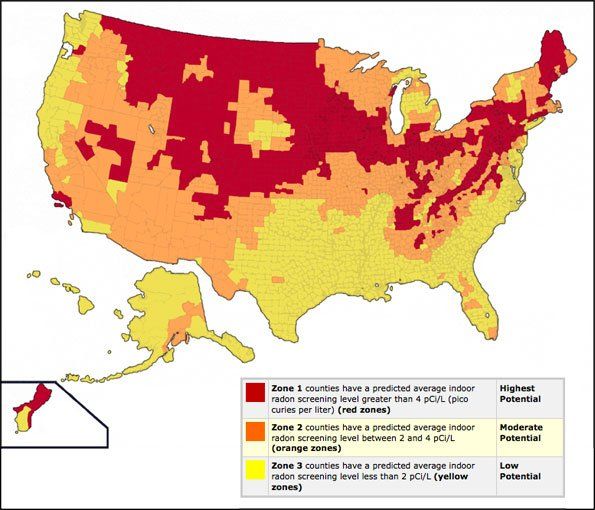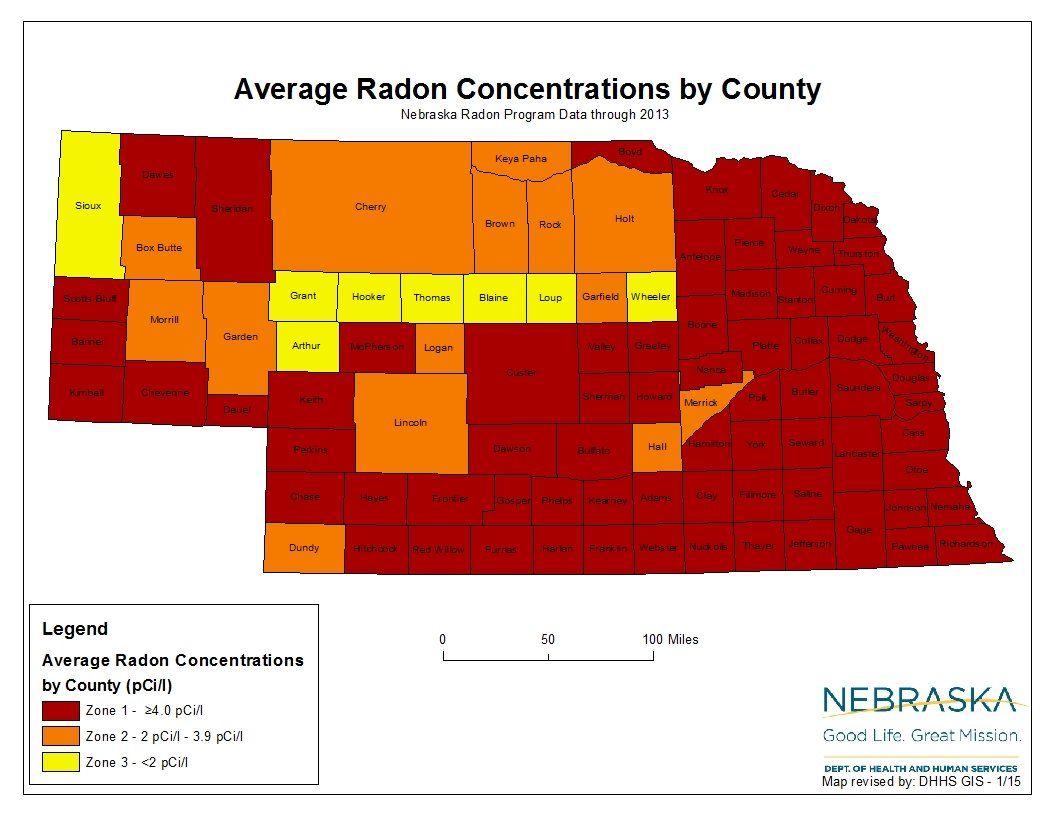EVERYTHING YOU NEED TO KNOW ABOUT RADON
Do you know what Radon is?
- If you have recently purchased a new home, you might be wondering how to test for radon. This gas is present in all U.S. states, although some regions may have lower levels than others. However, if you live in a home with elevated levels of radon, you should take steps to reduce exposure and protect your health. Here are some tips to help you test for radon.
- - You should know that radon exposure is not a cause of lung cancer. It will damage the lungs, although the effects may be delayed for years. In the US, the recommended level of radon exposure is 4 pCi/L. However, some countries allow higher levels than this and consider mitigation as a good option. Fortunately, Colorado is among the states that test for radon.
- - How to Test For Radon in Your Home. EPA published a Citizen's Guide to Radon to help homeowners test their homes. The EPA recommends that all homes below the third floor be tested for radon. Since radon cannot be seen, smell, or tasted, it is important to check your home with a radon tester. To determine if your home contains radon, you can visit the website of the EPA or the American Lung Association.

Radon is responsible for over 20,000 lung cancer deaths each year
- It is estimated that radon is present in every home. As a result, anyone with exposure to high levels of radon should be aware of the potential effects of radon on their health. Symptoms of lung cancer include hoarseness, shortness of breath, and chest pain. While it is not harmful to human health at the recommended levels, it can affect your reproductive system and cause mutations in cells.
- Although it is a known cause of lung cancer, it is often difficult to determine if someone has been exposed to the gas. In addition to the fact that the gas is colorless and odorless, radon has also been linked to childhood leukemia. The CDC estimates that exposure to radon causes more than twenty thousand lung cancer deaths each year. There is not enough research to prove the causal relationship between radon and lung cancer.
- There are many different ways that radon may enter the body. It can get into buildings through concrete blocks, well water, and building materials. While it is not toxic, it is radioactive and gives off particles. Unlike air, radon will not damage a person's health. The only way to be sure that a person is safe is to get the proper medical care.

RADON BRINGING HEALTH RISK TO PEOPLE
U.S. SURGEON GENERAL, RICHARD CARMONA, URGES AMERICANS TO GET THEIR HOMES TESTED FOR RADON
The Surgeon General of the United States issued an advisory urging Americans to get their homes tested for radon. The gas is a radioactive gas that gets into the air through cracks in buildings' foundations. If trapped indoors, radon levels can climb to unhealthy levels. The Surgeons General advises homeowners to take immediate action to mitigate their deteriorating indoor air quality.

RESEARCHERS SAYS THE EVIDENT LINK OF LUNG CANCER TO RADON IN HOMES
While there has been considerable controversy over whether or not household radon exposure is a cause of lung cancer, studies in France, Canada, and the U.S. have shown similar results. The researchers found that a direct correlation existed between radon exposure and lung cancer. The findings are based on the mortality rates of uranium miners. Moreover, gender differences in the incidence of pulmonary cancer have been found.
In fact, major scientific organizations believe that radon is the number one cause of lung cancer among non-smokers, and that its combination with cigarette smoke increases the risk by as much as eight to nine times. The synergistic effects between radon and smoking make it the number two cause of lung cancer in the U.S.. In fact, the incidence of lung cancer among non-smoker population is estimated at around 2,900 each year. Fortunately, remediation measures are not as expensive or time-consuming as they seem, and the resulting benefits are well worth the effort.
This study is based on a large data set of lung cancer deaths in North America and Europe. The results confirm the previous findings that smoking increases the risk of lung cancer. In fact, a smoker is approximately 25 times more likely to develop lung cancer than a non-smoker. While the results are not conclusive, the findings are still important to understand.
RADON EXPOSURE CAN IMMENSELY CAUSE LUNG CANCER TO BOTH SMOKERS AND NON-SMOKERS
Many people smoke, but not all of them realize that radon is one of the leading causes of lung cancer. It's estimated that as many as 15% of all lung cancers in the U.S. are caused by radon. This is why you should know about the risks associated with radon exposure before buying a home.
Almost 90% of lung cancer cases are attributed to smoking. Those who don't smoke can get the same type of cancer, because radon interacts with smoking to make it more likely to affect a non-smoker. Therefore, it's important to buy a radon detector and monitor your home's radon levels.
Although the cause of lung cancer is unknown, exposure to radon from the environment is the most common cause. In addition to a smoker's risk of developing lung cancer, non-smokers are also at increased risk of getting the disease. Fortunately, there are ways to reduce radon levels without smoking, but not everyone can do so.
Sources:
Haynes, William M., ed. (2011). CRC Handbook of Chemistry and Physics (92nd ed.). Boca Raton, FL: CRC Press. p. 4.122. ISBN 1439855110
Kusky, Timothy M. (2003). Geological Hazards: A Sourcebook. Greenwood Press. pp. 236–239. ISBN 9781573564694.
Navigation
Navigation
Services
Working hours
- Mon - Fri
- -
- Sat - Sun
- Closed
Copyright Elite Radon Mitigation Omaha | Proudly Powered by Snapps